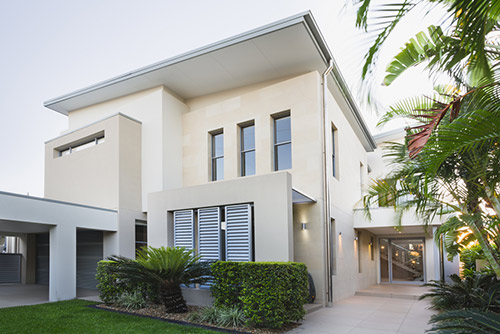When choosing colours for the exterior of your home, consider more than just your own taste preferences and how it looks, because the colour of your home can affect the way heat is absorbed. Because colours reflect and absorb heat, you must choose the right colours for yourself.
According to several case studies, dark and dull colours absorb a lot of the sun’s radiant energy, which is then transferred into the wall as radiated heat. On the other hand, light-coloured paints can help reflect the sun’s heat away from the home. White walls, for example, absorb 35% less heat than dark walls, for example, black walls, therefore requiring less energy to cool the home.

To save on energy bills and to protect our precious fossil fuels, choose light and white hues of paint for the outer walls of your home because they reflect more light and heat, heating your home less. Thus, you don’t need to waste as much energy on cooling it as opposed to when your home is painted in darker colours. But not everyone wants to paint their homes white, so cool colours like light blues and pinks are good for blocking solar radiation and overheating homes.
If you don’t want to repaint your home, other alternatives include using a whole house fan. This fan is installed on the top level of the home near the roof and helps supply cool air through the home, reducing energy costs and the need for an air conditioner. Yay long-term savings!
If you’re planning to remodel or renovate your space, consider using concrete or brick for the walls of your home because they help naturally reduce the overall temperatures.
Whether you live in a hot climate without air conditioning or are looking to save on energy expenses, the colours of the paint you use on the outside of your home considerably effect the temperature of the inside of your home.






